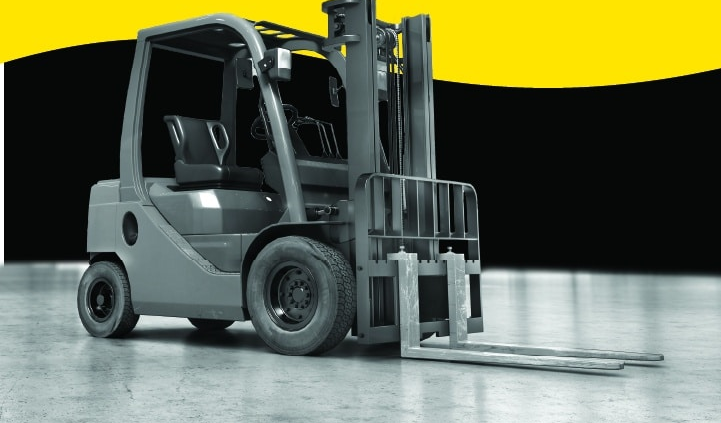How to Replace a Lead-Acid Forklift Battery with a Lithium One
Introduction
As warehouse operations and material handling evolve, many businesses are shifting from lead-acid to lithium-ion power systems in their forklifts. The transition is driven by lithium batteries’ longer lifespan, faster charging time, and minimal maintenance requirements.
However, replacing a lead-acid battery with a lithium one is not a plug-and-play task. It involves compatibility checks, technical adjustments, and safety measures.
This guide walks you through the practical steps and considerations to complete the swap safely and efficiently.
- Understand the Differences Between Lead-Acid and Lithium-Ion Batteries
Before replacing anything, it’s essential to understand what makes these two battery types different:
| Feature | Lead-Acid | Lithium-Ion |
| Energy Density | Low | High |
| Maintenance | Frequent (watering) | Minimal |
| Charging Time | 6–8 hours + cooling | 1–3 hours |
| Lifespan | ~1,500 cycles | 3,000+ cycles |
| Weight | Heavier | Lighter |
These differences affect not only performance but also forklift batteries configuration, safety systems, and charger compatibility.
⚖️ However, lithium-ion is not always the superior choice in every scenario.
In high-temperature environments, lithium batteries may require additional thermal insulation or active cooling systems. For operations that use forklifts intermittently or have budget constraints, lead-acid batteries may still offer a cost-effective solution.
Moreover, older forklift models without CAN bus or battery communication protocols might need controller upgrades or wiring adaptations to function properly with lithium systems.
When evaluating battery options, base your decision not just on technology but on actual usage needs, work shifts, infrastructure, and environmental conditions. Both battery types remain relevant depending on the application.
For an in-depth overview of different battery options, visit our resource page on forklift batteries.
- Check Forklift Compatibility
Not all forklifts are ready to accept lithium batteries without modification. Here’s what you need to assess:
- Voltage: Ensure the lithium battery matches the original system voltage (e.g., 24V, 36V, 48V).
- Battery Compartment Dimensions: Lithium batteries are often more compact; spacers or mounts may be needed.
- Counterbalance Weight: Lead-acid batteries are heavier and serve as counterweights. A lighter lithium battery may affect forklift balance.
- Communication Interface: Some forklifts require CAN bus or software updates to integrate with lithium battery BMS systems.
Always consult the forklift manual or your OEM dealer for compatibility guidance.
- Choose the Right Lithium-Ion Battery
Once compatibility is confirmed, selecting the correct battery is critical:
- Voltage and Capacity Match: Choose a lithium battery that meets or exceeds the original specs.
- Battery Dimensions and Mounting: Confirm fit, and plan for physical adapters if needed.
- Connector Type: Ensure the power connectors match. If not, adaptors or cable replacements are necessary.
- Integrated Battery Management System (BMS): Quality lithium batteries include BMS for monitoring voltage, temperature, and safety functions.
This step ensures reliable operation and avoids system faults.
- Replace or Reprogram the Charger
Lithium batteries require different charging profiles from lead-acid ones:
- Charging Algorithm: Lithium batteries use a constant current/constant voltage (CC/CV) profile.
- Dedicated Lithium Chargers: Using a proper lithium charger ensures efficient and safe recharging.
- Safety Features: Consider adding interlock systems that prevent charging errors or battery over-discharge.
Do not use a lead-acid charger unless it has been explicitly approved for lithium compatibility.
- Removal and Installation Process
Safety First:
- Disconnect all power before beginning.
- Wear insulated gloves and eye protection.
- Use mechanical assistance to lift or remove heavy batteries.
Removal Steps:
- Turn off the forklift and disconnect power.
- Remove battery hold-down brackets.
- Unplug the main connectors.
- Carefully lift out the lead-acid battery.
Installation Steps:
- Place the lithium battery into the compartment.
- Fill any gaps with vibration-absorbing padding.
- Connect the main power and communication cables.
- Confirm polarity and secure all terminals.
- If needed, install counterweights or shims for balance.
- Initial Testing and First Charge
- Power up the forklift and check for error codes.
- Verify battery voltage, SOC (state of charge), and temperature readings via dashboard or BMS screen.
- Charge the battery fully using a lithium-compatible charger.
- Monitor system performance during the first few charge/discharge cycles.
- Maintenance and Operational Adjustments
- Train Operators: Provide orientation on lithium battery handling and charging protocols.
- Monitor Battery Data: Many lithium batteries allow data logging via Bluetooth or CAN.
- Proper Recycling: Arrange for certified recycling or disposal of old lead-acid batteries.
Using smart diagnostics and proactive care will extend battery lifespan and ensure safe operation of your forklift batteries.
Conclusion
Upgrading from lead-acid to lithium forklift batteries can significantly improve operational uptime, reduce maintenance, and lower long-term energy costs. But this upgrade involves several technical considerations that should not be overlooked.
By carefully evaluating your forklift’s compatibility, battery requirements, and charger setup, you can transition safely to a modern, efficient power solution.
If done right, this investment will future-proof your equipment and offer long-term returns across a wide range of material handling applications.


